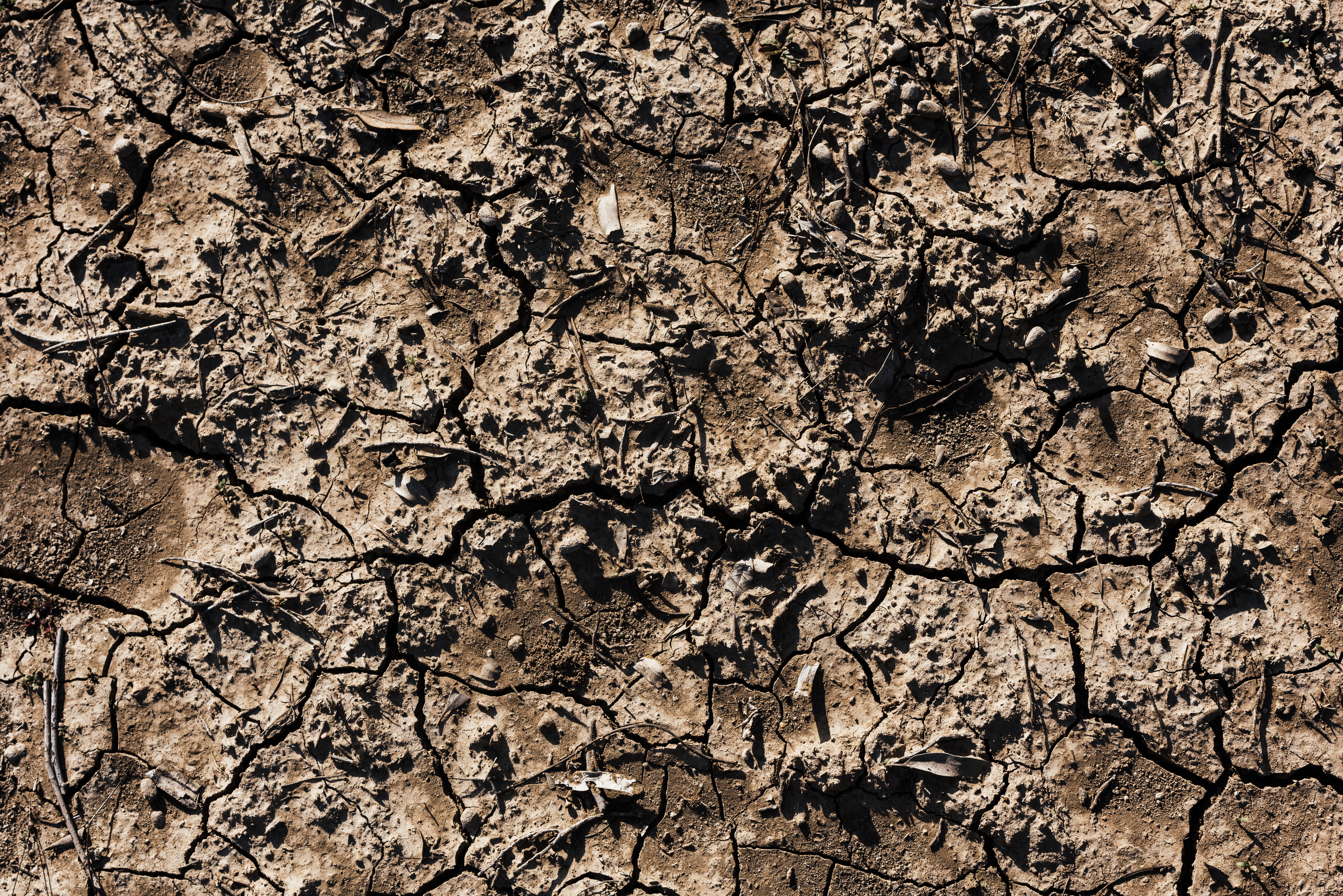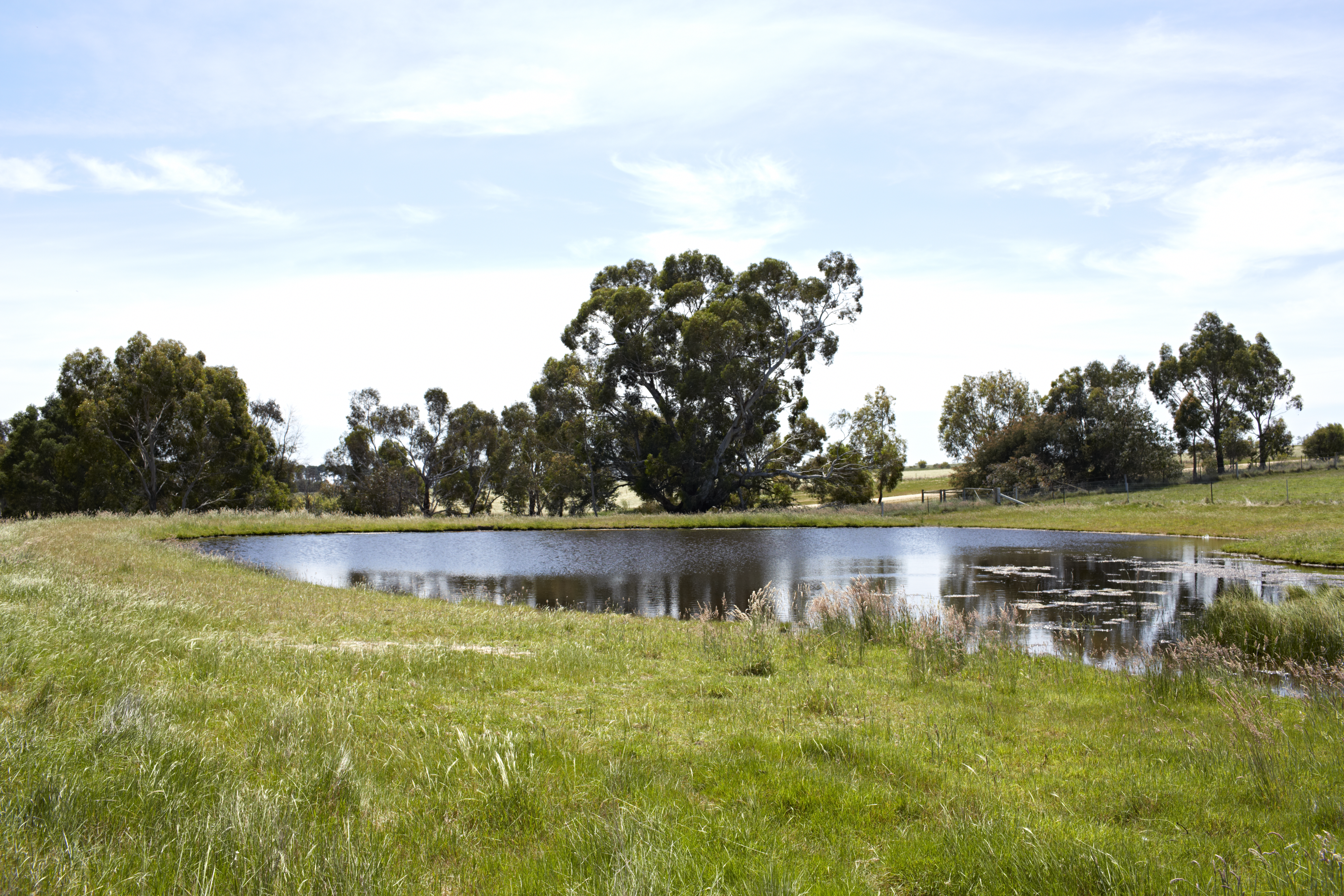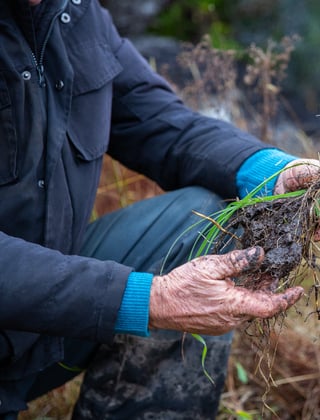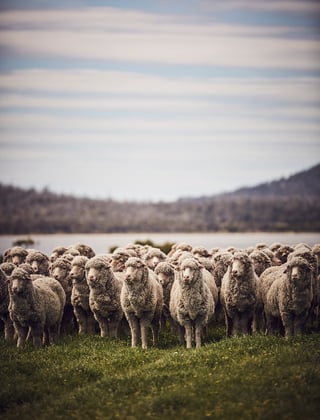Drought and natural disasters
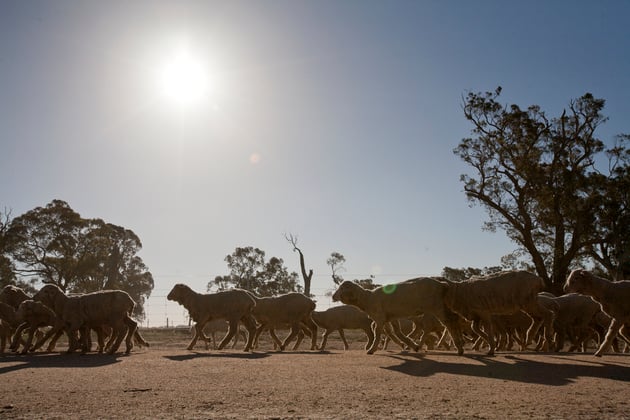
Are you going into, planning for, enduring or recovering from drought or a natural disaster? To assist woolgrowers, a range of resources are available for planning, management and recovery.
Resources
Click anywhere in the boxes below to expand and access the resources.
Managing Sheep in Droughtlots

Managing Sheep in Droughtlots
The information in this publication aims to highlight the purpose, benefits and experiences of sheep producers managing sheep in confined areas during drought.
One of the most important issues for any farm business emerging from drought is the need to restore the business to optimum productivity and profitability as quickly as possible. The purpose of the droughtlot is to assist this specifically by:
- Preserving preferred pasture density or composition.
- Minimising soil and nutrient loss from bare ground.
Managing fodder prices for drought
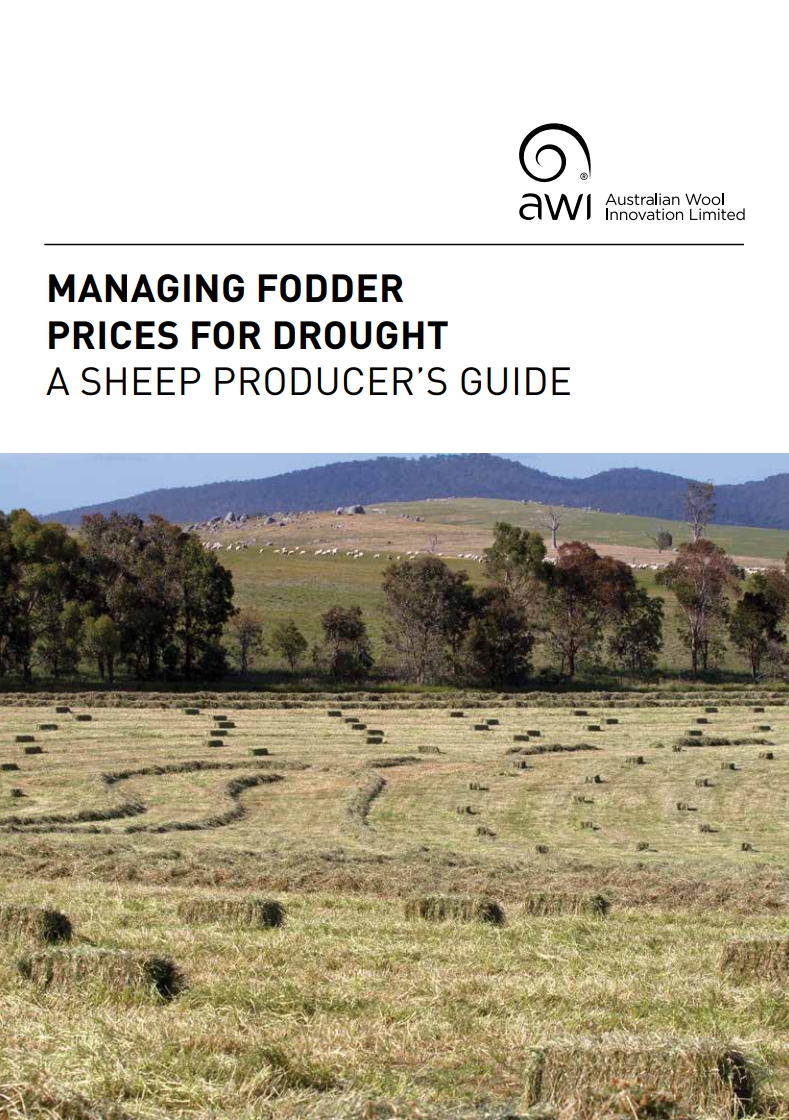
Managing fodder prices for drought
Knowing where water is on your property and how much you have available is vital in times of drought.
The best way to manage and maintain stock water is to have reliable information about your property’s water supplies. This means knowing where the water is, how much is available and whether it is ‘fit for purpose’. A water stocktake will provide this vital information.
Stock Water

Stock Water
Knowing where water is on your property and how much you have available is vital in times of drought.
The best way to manage and maintain stock water is to have reliable information about your property’s water supplies. This means knowing where the water is, how much is available and whether it is ‘fit for purpose’. A water stocktake will provide this vital information.
Kondinin Group and droughtinfo.com.au
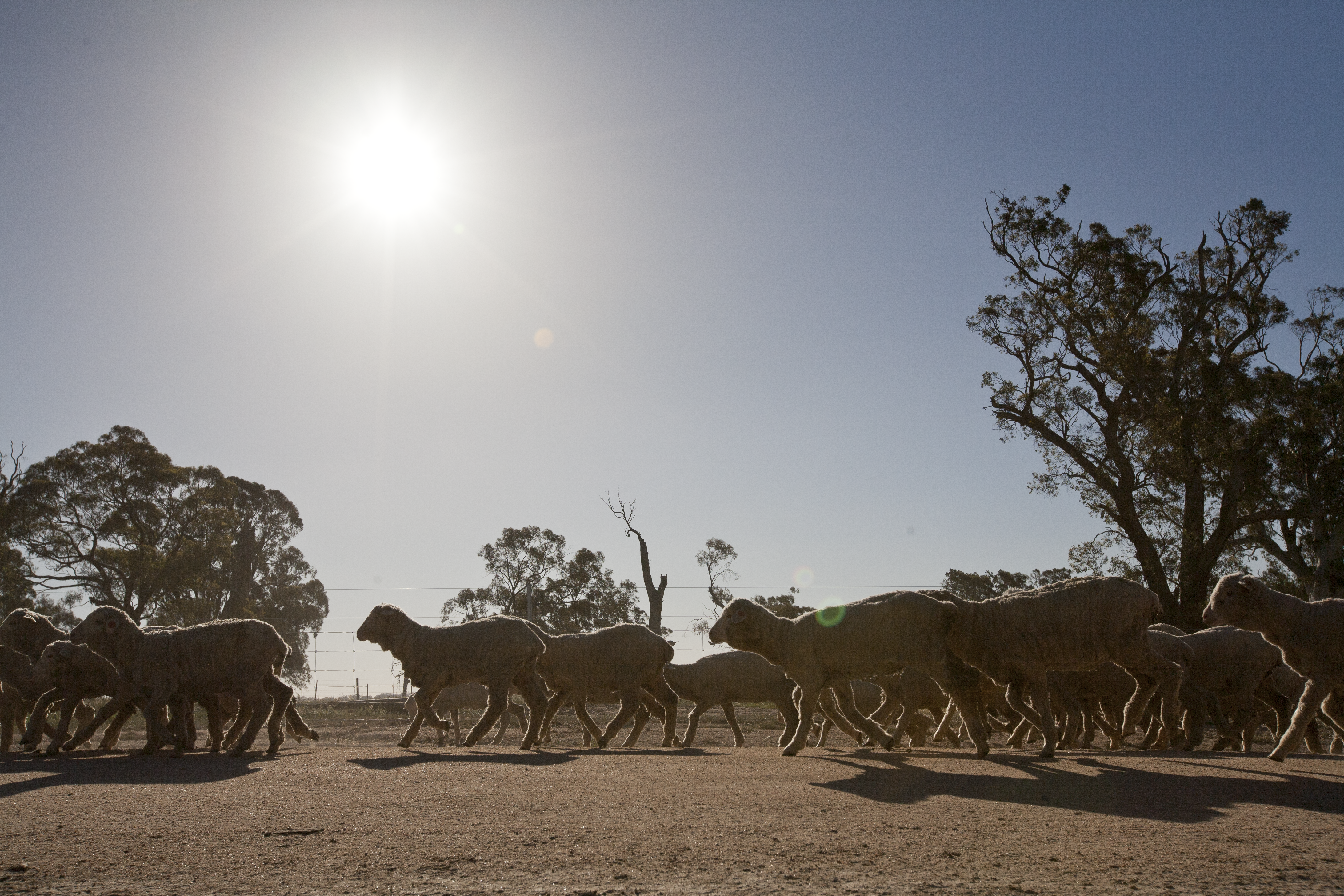
Kondinin Group and droughtinfo.com.au
We can’t control the weather, but we can help you manage the risk.
That’s the Drought Info initiative – providing independent research and information to support farmers through times of drought and help them make better farm management and practice decisions.
Tools
Woolgrower tools to support decision making.
Cost of Production Calculator
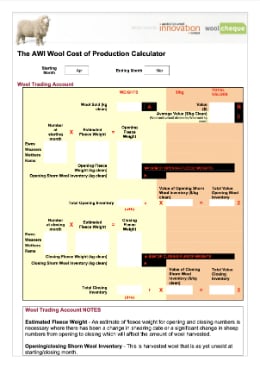
Cost of production (COP) is a key factor affecting the profitability of wool producing businesses. COP, measured in dollars per kilogram of clean wool, is an indication of the outlay required to produce each kilogram of wool.
COP is a measure of the efficiency of wool production. Calculating the cost of production is an important step in assessing flock profitability and a first step to making change.
Use the AWI cost of production calculator to:
- Measure wool enterprise performance year on year.
- Compare enterprise efficiency annually against other woolgrowers to identify scope for improvement.
- Help with wool marketing decisions.
Calculate Cost of Production - click the links below to:
-
Read the Wool COP calculator background material with instructions, information on how your COP compares with others and helpful tips.
- Use the Wool COP calculator:
- Use the Making More From Sheep COP calculator for wool and sheep enterprises:
Feed Budgeting
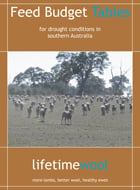
Feed budgeting in the dry period is inherently difficult due to the variability of the quality of dry feed and the value of the subsequent portion that the sheep choose to eat. The decline rate and pasture height differences between different pasture systems also affect the amount of energy sheep can gain from dry pasture. There are, however, some 'rules of thumb' that can be used as a guide for supplementary feeding in the dry period.
The general steps for feed budgeting at any time of the year are;
- What they can eat - What they require = surplus or deficit of energy
- If they aren't getting enough energy then how much to feed to meet the requirement.
It is important to remember too, that the energy requirements of sheep vary with the feed they are eating, the amount of grazing they are doing to find the feed and their current status of nutrition and whether they are dry, pregnant or lactating.
Feed On Offer Library
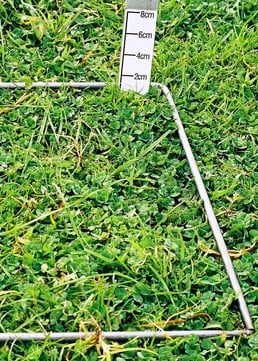
The Feed On Offer (FOO) library allows users to estimate FOO and nutritive value of grazed pastures. Animal performance is determined by the quality and quantity of pasture available and when known, better decisions can be made on allocation of stock to paddocks or supplementary feeding.
Video Resources
AWI Extension NSW Webinar - Feeding for a dry season
AWI Extension NSW Webinar -Understanding and Interpreting Weather Forecasts






